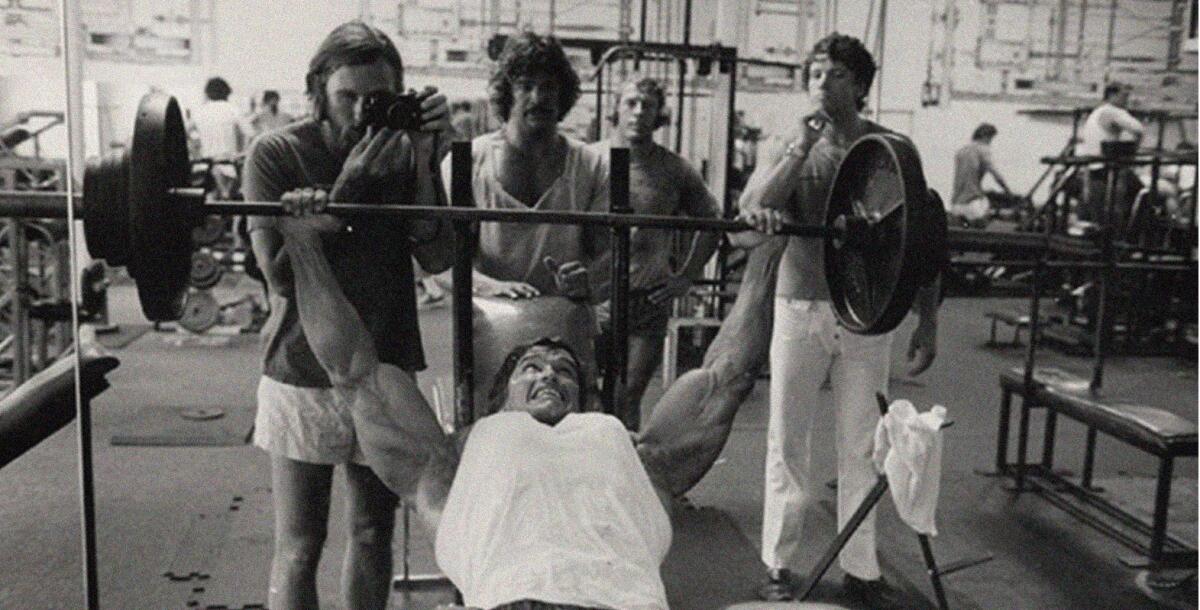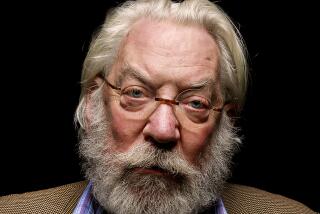‘Pumping Iron’ filmmaker George Butler, who helped make Arnold Schwarzenegger a star and a governor, dies

- Share via
Documentary filmmaker George Butler, whose 1977 film “Pumping Iron” ignited a fitness revolution and propelled Austrian bodybuilder Arnold Schwarzenegger to Hollywood stardom and ultimately to Sacramento as the state’s governor, has died at home in New Hampshire. He was 78.
Suffering from pneumonia, Butler died Oct. 21 at his farm in Holderness, N.H., said his son Desmond Butler, a reporter at the Washington Post.
The son of a British Army officer and a New England socialite who spent his childhood in Somalia and Jamaica, George Butler directed nearly a dozen films during his four-decade career.
Arnold Schwarzenegger encouraged the director of “Pumping Iron,” the documentary that launched him in Hollywood 25 years ago, to re-release it unedited -- including a marijuana-smoking scene.
His last project, “Tiger Tiger,” which follows a big cat conservationist into the wilds of India and Bangladesh, is due out next year, said Caroline Alexander, a writer and film producer and Butler’s longtime companion.
In the 1970s, Butler had covered bodybuilding as a photojournalist. He collaborated on a book about the sport with author Charles Gaines before cobbling together funds for his first film.
“What he loved about ‘Pumping Iron’ was it informed his instinct for quirky stories,” Alexander said. “This was a very quirky subject to have undertaken, and the fact that it came out so well both commercially and artistically meant that he trusted his instinct going forward.”
At the time, Schwarzenegger had appeared in a few small television and film roles but was little known outside the subculture of bodybuilding.
“Pumping Iron” leaned heavily on Schwarzenegger’s magnetic presence and ability to land a joke, long before he would become the star of the “Terminator” movie franchise and California’s governor in a historic recall election that drew more than 130 candidates, including a porn star and dozens of D-list celebrities.
Butler became close friends with Schwarzenegger while in the process of turning him into a star. Schwarzenegger would later say the film, which Butler co-directed with Robert Fiore, included heavy doses of fabricated conflict.
In the movie, Schwarzenegger trains at Gold’s Gym in Venice to defend his Mr. Olympia bodybuilding title in South Africa against Lou Ferrigno, an insecure former sheet metal worker living with his parents in Brooklyn, N.Y. Like Schwarzenegger, Ferrigno would later expose the dramatic elements in the film. He told Generation Iron Fitness Network that even though his father, a police lieutenant, goaded Ferrigno on as a hard-knuckled coach, he had never helped him train before the cameras started rolling.
Ferrigno would fail to knock Schwarzenegger off his perch as bodybuilding’s champion. Nevertheless, he used his fame from “Pumping Iron” to land a starring role, less than one year later, in the television series “The Incredible Hulk.”
Aside from opening doors in Hollywood for Schwarzenegger and Ferrigno, the film also popularized bodybuilding. Before “Pumping Iron,” many Americans viewed the sport as a narcissistic perversion, said Alan Klein, professor emeritus of anthropology at Northeastern University and the author of “Little Big Men.”
After the notoriety of “Pumping Iron,” the owners of Gold’s Gym would open hundreds of franchises and bodybuilding became mainstream, Klein said. The ripple effects would contribute to the fitness craze of the 1980s, a decade when aerobics and running helped set the fashion template.
Schwarzenegger, a day after Butler’s death, praised him in a tweet.
“When I think about all of the people who were responsible for the growth of bodybuilding and the sport’s crossover to the mainstream, two of the first people to come to mind are, without any doubt, George Butler and Charles Gaines,” he wrote.
Butler made the 1985 film “Pumping Iron II: The Women,” before moving on to other subjects. In his 2004 documentary “Going Upriver,” just as he had with Schwarzenegger, he turned the camera on a close friend: future U.S. Secretary of State John Kerry.
The film about Kerry’s service in the Vietnam War was released the year Kerry, then a U.S. senator from Massachusetts, was running for president as the Democratic nominee.
It was a rare detour into politics for the filmmaker. He most frequently focused on the outdoors and exploration, in such works as “The Endurance,” a 2000 film about Ernest Shackleton’s 1914 expedition to the Antarctic, and 2006’s “Roving Mars,” about the Mars Exploration Rovers.
At one point, a national TV broadcast allowed Butler to explore what it would be like to be dead. Charlie Rose on his PBS show included Butler in a retrospective of notable people who had died in 2008, after mistaking Butler for a music executive with the same name.
“I was here on Thursday, gone on Friday and back on Saturday,” Butler joked at the time with a reporter for the Tallahassee Democrat.
Butler, whose marriage to Victoria Leiter ended in divorce, is survived by Alexander, sons Desmond and Tyssen and six grandchildren.
Dobuzinskis is a Times special correspondent.
More to Read
Start your day right
Sign up for Essential California for the L.A. Times biggest news, features and recommendations in your inbox six days a week.
You may occasionally receive promotional content from the Los Angeles Times.






